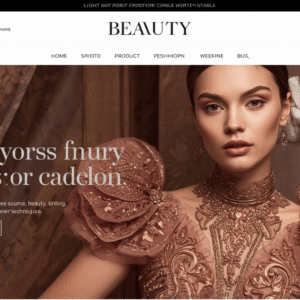
Introduction to Target Audience
In the realm of business and marketing, the concept of a target audience is paramount. A target audience refers to a specific group of consumers identified as the intended recipient of a product, service, or marketing message. Understanding your target audience is not merely a strategic advantage; it is a foundational element for the success of any business or organization. By delving into the demographics, preferences, and behaviors of potential customers, businesses can tailor their efforts to meet the specific needs and desires of their audience.
The benefits of comprehensively understanding your target audience are manifold. Firstly, it allows for the development of improved marketing strategies. When a business knows who their audience is, they can craft messages that resonate more deeply, thereby increasing the effectiveness of their campaigns. Secondly, this understanding fosters better customer engagement. By addressing the unique concerns and interests of their audience, companies can build stronger, more meaningful relationships with their customers. Lastly, a keen insight into the target audience often translates into increased sales. When marketing efforts are precisely aligned with audience expectations, the likelihood of conversion escalates significantly.
Numerous companies have demonstrated the power of identifying and leveraging their target audience to achieve business goals. Take, for instance, the success of Apple Inc. Apple has meticulously analyzed their target audience, focusing on tech-savvy, design-conscious consumers. This understanding has allowed Apple to create products and marketing campaigns that consistently appeal to this demographic, resulting in a loyal customer base and robust sales figures. Similarly, Nike’s marketing strategies showcase their thorough understanding of athletes and fitness enthusiasts, enabling them to dominate the sportswear market with compelling, targeted advertising and product offerings.
In essence, the ability to pinpoint and engage with a target audience is a critical skill for any business aiming to thrive in today’s competitive market. A deep understanding of who your customers are can lead to more effective marketing, stronger customer relationships, and ultimately, greater business success.
Identifying Your Target Audience
Identifying your target audience is a crucial step in any marketing strategy. It involves understanding who your potential customers are and what they want. This can be achieved through a combination of methods and tools designed to gather and analyze relevant data. Market research is paramount in this process and can be conducted through various means such as surveys, focus groups, and data analysis. Each method offers unique insights that can help you fine-tune your understanding of your audience.
Surveys are a widely-used tool that allows you to collect quantitative data directly from your audience. By asking specific, targeted questions, you can gather information on a range of topics including preferences, behaviors, and purchasing habits. Focus groups, on the other hand, offer qualitative insights. They involve a small group of people discussing a particular topic under the guidance of a moderator. This method helps to uncover deeper, more nuanced opinions and feelings about your product or service.
Data analysis is another fundamental aspect of identifying your target audience. By examining existing data, such as sales records, website analytics, and social media interactions, you can identify patterns and trends that point to who your audience is and what they value. This data can be segmented based on various demographic factors including age, gender, income, education, and geographic location. These demographic factors provide a solid foundation for understanding the basic characteristics of your audience.
Psychographic factors are equally important and delve deeper into the psychological aspects of your audience. These include interests, values, and lifestyle choices. Understanding these factors can help you create more tailored and effective marketing strategies. To gather psychographic data, you can use methods such as detailed customer interviews, psychographic surveys, and analyzing social media behavior.
To create a detailed audience profile, start by compiling all the gathered data and identifying common characteristics and trends. Use this information to develop a persona that represents your ideal customer. This persona should include demographic and psychographic details, as well as any other relevant information that can help you understand and reach your audience more effectively.
Creating Buyer Personas
Creating buyer personas is a crucial step in understanding and targeting your audience effectively. A buyer persona is a semi-fictional representation of your ideal customer based on market research and real data about your existing customers. By developing detailed personas, businesses can tailor their marketing efforts to meet the specific needs, behaviors, and concerns of their target audience.
Key components of a buyer persona include background information, goals, challenges, and buying behavior. Background information encompasses demographic details such as age, gender, income, education, and location. It also includes professional background, such as job title, industry, and work experience. Goals refer to what the persona aims to achieve, both personally and professionally. Challenges are the obstacles that prevent them from reaching these goals. Buying behavior outlines their purchasing decisions, preferred channels, and decision-making process.
To create effective buyer personas, follow these steps:
1. Conduct Research: Gather data through surveys, interviews, and analytics. Engage with your current customers and prospects to understand their needs and preferences.
2. Identify Patterns: Analyze the collected data to identify commonalities and trends among your audience. Look for shared characteristics and behaviors.
3. Develop Personas: Based on the identified patterns, create detailed personas. Include a name, background information, goals, challenges, and buying behavior for each persona.
4. Validate Personas: Share the personas with your team for feedback. Ensure they accurately represent your target audience and refine as needed.
5. Utilize Personas: Use the personas to guide your marketing strategies, content creation, and product development. Tailor your efforts to address the specific needs and pain points of each persona.
Several tools and templates can assist in creating buyer personas, such as HubSpot’s Persona Template, Xtensio’s User Persona Creator, and Make My Persona by HubSpot. These resources offer structured formats to help you organize and present your personas effectively.
Incorporating buyer personas into your marketing strategy enables more personalized and targeted communication, ultimately leading to higher engagement and conversion rates.
Leveraging Audience Insights for Marketing Success
Understanding your target audience is the cornerstone of any successful marketing strategy. By leveraging audience insights, businesses can tailor their efforts to meet the specific needs and preferences of their customers, thereby driving growth and engagement. This process begins with gathering comprehensive data about your audience, which can be done through various methods such as surveys, social media analytics, and customer feedback.
Once you have a clear picture of your target audience, you can apply these insights across multiple marketing channels. For instance, content marketing can be significantly enhanced by creating blog posts, videos, and other materials that address the specific interests and pain points of your audience. This targeted approach not only attracts more visitors to your website but also encourages them to engage with your content.
Social media platforms offer another avenue for leveraging audience insights. By understanding which platforms your audience frequents and what type of content they engage with, you can create more effective social media campaigns. For example, if your audience is highly active on Instagram, you might focus on visually appealing content such as images and short videos to capture their attention.
Email campaigns can also benefit from a deep understanding of your audience. Personalized emails that address the specific needs and preferences of your recipients are far more likely to be opened and acted upon. Segmentation is key here, allowing you to send targeted messages to different audience groups based on their behavior and interests.
Personalized advertising is another powerful tool. By using audience data to create ads that speak directly to the individual, you can significantly increase the effectiveness of your advertising spend. Platforms like Google Ads and Facebook Ads offer robust targeting options that allow you to reach your ideal customers with precision.
Continuous audience analysis is crucial for maintaining the effectiveness of your marketing strategies. Audience behaviors and preferences can change over time, and staying attuned to these shifts allows you to adapt your strategies accordingly. By regularly reviewing your audience data and gathering feedback, you can ensure that your marketing efforts remain relevant and impactful.
Many businesses have successfully leveraged audience insights to achieve remarkable results. For example, Netflix uses extensive data analysis to recommend personalized content to its users, significantly increasing viewer engagement and retention. Similarly, Starbucks uses audience insights to tailor its marketing campaigns and product offerings, leading to sustained customer loyalty and growth.





